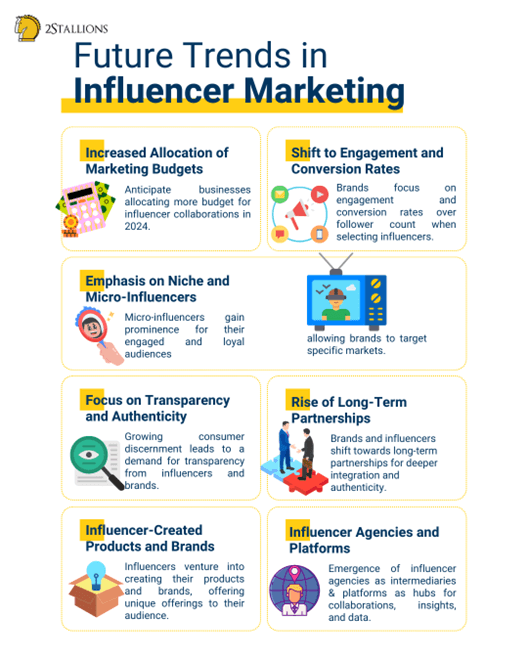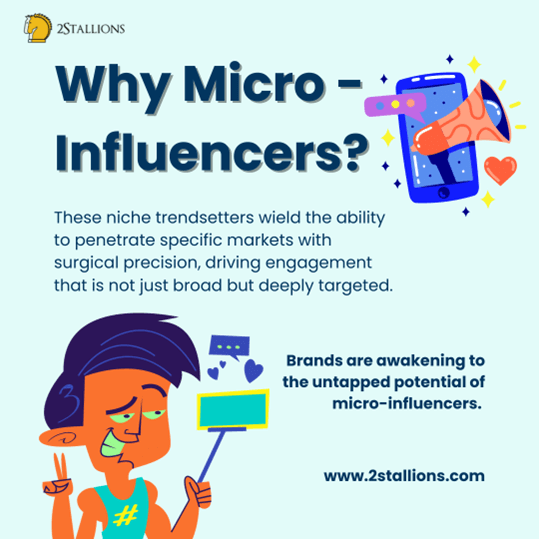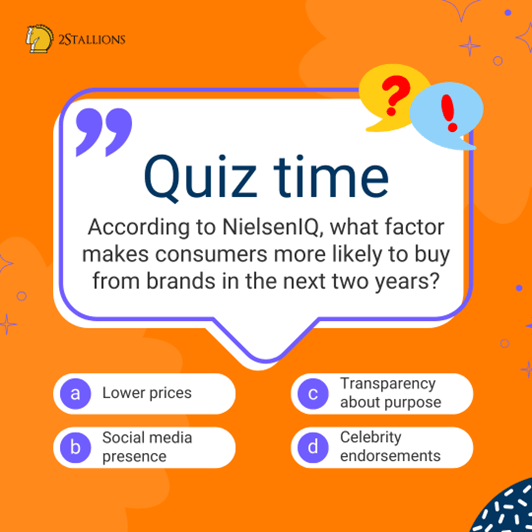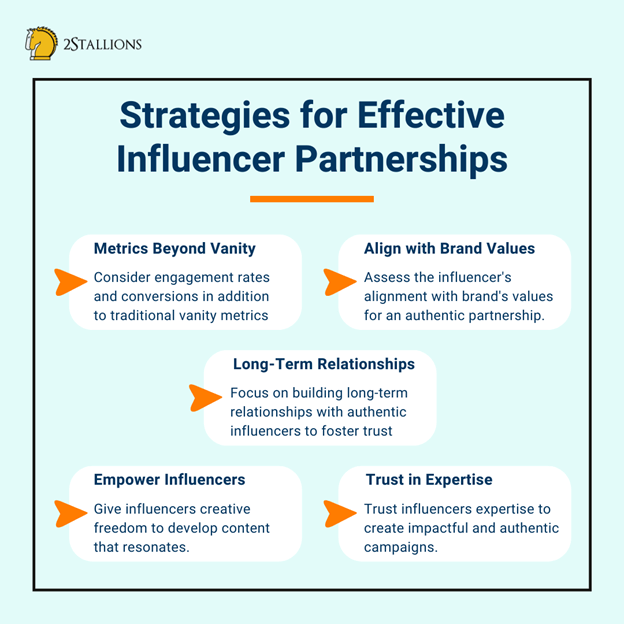Content
SHARE

Over the past few years, influencer marketing has risen to prominence as a formidable tool for brands aiming to establish genuine connections with their target audience. Fueled by the proliferation of social media platforms, influencers have become instrumental in shaping consumer behaviour.
As we look ahead to 2025, it’s imperative to scrutinise the trajectory of influencer marketing and its adaptive prowess within the ever-evolving digital landscape.
Unpacking the Evolution of Influencer Marketing
Influencer marketing constantly evolves as a dynamic bridge between brands and consumers. Its unique ability to cultivate authentic connections differentiates it from traditional advertising methods.
[thrive_leads id=’8346′]
The Impact of Influencer Marketing on the Advertising Industry
Conventional advertising faces mounting challenges as consumers grow resistant to traditional promotions. In response, businesses increasingly turn to influencers, recognising the potential for authentic engagement with their target audience.
Driving Forces Behind the Rise of Influencer Marketing
- Direct Connection through Social Media
Social media platforms empower influencers to establish direct and meaningful connections with their followers, fostering loyal communities.
- Demand for Authentic and Personalised Experiences
In an era where authenticity and personalisation reign supreme, consumers are drawn to influencers who embody genuineness and relatability.
Exponential Growth in Influencer Marketing
The influencer marketing industry is experiencing unprecedented growth, resulting in heightened competitiveness and market saturation. This growth is substantiated by compelling statistics, such as those provided by HubSpot.
According to their findings, 89% of marketers who had already engaged in influencer marketing express intentions to increase or maintain their investments in 2023. Furthermore, 17% of marketers plan to venture into influencer marketing for the first time in 2023.
As we venture into 2025, it is evident that influencer marketing will continue to play a pivotal role in shaping brand-consumer relationships. Brands must remain attuned to emerging trends and harness the authentic and personalised nature of influencer marketing to stay relevant in an ever-evolving digital landscape.
Future Trends in Influencer Marketing (2025 and Beyond)
Influencer marketing stands as a transformative force in the dynamic advertising landscape, reshaping how businesses connect with their audiences:

Micro-Influencers and the Demand for Transparency
In 2025, micro-influencers will continue to rise in popularity due to their highly engaged audiences, fostering trust and credibility. Brands will recognise the potential of these niche influencers in reaching specific markets and driving targeted engagement.
Collaborating with micro-influencers enables brands to create personalised and relatable content that resonates more deeply with their audience. This shift towards authenticity and relatability will drive higher engagement rates and establish more meaningful connections between brands and consumers.
(Source_Answer is C: Transparency about purpose!)
The Role of Authenticity in Future Influencer Marketing
Authenticity remains a critical aspect of influencer marketing and is poised to become even more vital in 2025. Consumers are becoming increasingly discerning and quickly identifying content that feels forced or inauthentic.
Brands must work closely with influencers to ensure that sponsored content seamlessly integrates with the influencer’s usual content. Authenticity is crucial in establishing trust and credibility with the audience, and by giving influencers creative freedom, brands can create organic and relatable content.
The Impact of Technology on Influencer Marketing
In 2025, AR and VR will reshape influencer marketing. VR’s estimated $12 billion revenues and the 92.1% YoY growth in 2021 headset shipments underscore their ascent. These technologies redefine content, offering immersive experiences beyond static visuals.
AR and VR empower influencers to transcend conventional content, allowing consumers to see and virtually experience products. This convergence of tech, micro-influencers, and authenticity defines the 2025 influencer landscape.
As 2025 unfolds, brands become architects of a tech-driven narrative. AR and VR aren’t trends but gateways to unprecedented engagement. In this chapter, brands shape the story through bold forays into the influencer frontier. The stage is set — will your brand seize the tech odyssey?
Adapting to the Changes in Influencer Marketing
As the influencer marketing landscape evolves, brands must adapt their strategies to stay ahead. Here are some strategies businesses can implement to navigate these changes successfully:
Strategies for Effective Influencer Partnerships
When selecting influencers to partner with, brands should move beyond vanity metrics and consider engagement rates, conversions, and the influencer’s alignment with the brand’s values. Building long-term relationships with authentic influencers will foster trust and consistency.
Moreover, brands should empower influencers and give them creative freedom to develop content that resonates with their audience. By trusting influencers’ expertise, brands can create more impactful and authentic campaigns.
Navigating the Changing Influencer Landscape
In a landscape saturated with influencers, brands can stand out by focusing on niche and micro-influencers. These influencers often have highly engaged and loyal communities that trust their recommendations. Collaborating with micro-influencers allows brands to connect with specific target audiences and create more personalised content.
Additionally, brands should stay up-to-date with emerging platforms and trends. By harnessing new opportunities and reaching audiences innovatively, brands can stay ahead of the competition.
The Future of Influencer Marketing Beyond 2025
While predicting the future with certainty is challenging, there are some long-term predictions for influencer marketing that we can explore:
Long-Term Predictions for Influencer Marketing
Influencer collaborations will likely become integral to brands’ overall marketing strategies as influencer marketing evolves. Influencers will no longer be seen as separate entities but as an extension of the brand, working hand-in-hand to achieve shared goals.
In addition, brands may invest in building their community of influencers known as brand ambassadors. These ambassadors will deeply understand the brand’s values and become trusted advocates, further enabling brands to build authenticity and loyalty.
Potential Challenges for Influencer Marketing
While influencer marketing presents countless opportunities, there will undoubtedly be challenges. Maintaining authenticity and trust will become increasingly important as the industry grows.
Moreover, influencer fatigue may become a concern. A survey conducted in 2018 showed that 47% of social media users had grown tired of seeing “repetitive” influencer content. Consumers are constantly bombarded with sponsored content, and brands must find innovative and creative ways to capture their attention and build genuine connections.
Harnessing the Power of Influencer Marketing
As we look towards the future, influencer marketing will continue to play a vital role in driving brand awareness, engagement, and conversions. By understanding the evolving landscape, harnessing emerging technologies, and prioritising authenticity, businesses can leverage the power of influencers to connect with their target audience and drive impactful results.
Moving into 2025, influencer marketing will undoubtedly undergo significant changes. Brands that embrace and adapt to these changes will have the opportunity to create meaningful connections with their audience and stay at the forefront of the ever-evolving digital landscape.
[thrive_leads id=’8302′]
Frequently Asked Questions About How Influencer Marketing Will Change in 2025
What is the future of influencer marketing?
In 2025, the continued evolution of technologies such as virtual reality (VR), augmented reality (AR), and artificial intelligence (AI) is expected to reshape influencer marketing. Brands may explore immersive experiences and innovative content formats, requiring influencers to adapt to new platforms and storytelling techniques.
What is the role of authenticity in marketing?
As consumer trust becomes increasingly important, authenticity is expected to play a pivotal role in influencer marketing in 2025. Influencers who can maintain genuine connections with their audience and demonstrate authenticity in their collaborations will likely be more successful. Brands may prioritise long-term partnerships with influencers who align with their values and resonate authentically with their target audience.
How is the prediction for influencer marketing in 2025?
With growing concerns about transparency and consumer protection, regulatory bodies may introduce or enhance guidelines for influencer marketing practices in 2025. Influencers and brands may need to navigate stricter disclosure requirements, privacy regulations, and guidelines surrounding sponsored content. Staying informed about and adapting to these changes will be crucial for successful influencer marketing campaigns.
How are the influencers trends in 2025?
The way audiences consume content is ever-evolving, and influencers will need to adapt to emerging trends in 2025. Short-form video content, interactive experiences, and personalised content tailored to specific platforms will likely gain prominence. Understanding these content trends and tailoring strategies accordingly will be essential for influencers and brands aiming to stay relevant in the dynamic landscape of influencer marketing.
[/fusion_text][/fusion_builder_column][/fusion_builder_row][/fusion_builder_container]

















